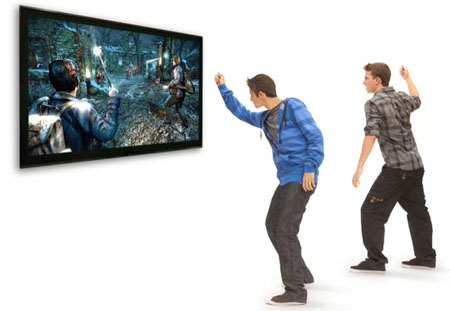As technology develops and we become more and more attached to our screens, be it television, laptop or smartphone, the advertising world is having to continually adapt itself to best suit the mediums we populate the most.
Over the years, TV adverts have largely kept the same form: a series of video clips that simply play one after the other. Now, as our TV watching habits are moving away from the conventional TV set-up and more towards watching programmes online or on smaller devices, advertisers are able to interact with their audience in ways never possible before.

What is an interactive TV ad?
An interactive advert is, in short, any advert that encourages or relies on audience interaction, whether this follows a click-through process, gives the consumer some kind of choice/option or seeks their feedback.
Traditionally, watching TV is a one-sided action where the programme or advert is the active party and the viewer passively watches. Interactive ads turn this notion on its head, including the viewer as an active party in the process.
Of course, this puts the advertisers at a great advantage, as their audience is much more likely to pay attention to their product or message if interacting with the advert.

Déjà vu
Interactive adverts have existed on the internet for a while. The majority of web pages you visit nowadays will contain at least on advert that asks for some form of interaction, whether it’s a simple click or a poll you’re asked to answer.
Some companies have even used their advertising space to host an interactive game or challenge that encourages consumers to connect with their product. For example, Domino’s added an interactive pizza game into The X Factor App, which offered money-off vouchers as prizes.
If you tend to watch your favourite TV programmes through catch-up sites such as ITV Player, you will have noticed an increase in adverts that give you the option of what to watch. Most commonly this is in the form of choosing which product out of a few you would like to see a clip of.
Press the red button
When it comes to watching television in the conventional sense, it seems that the red button will be the principal tool of interactivity.
The first interactive ad using the red button was aired in 2000, but its release didn’t quite have the effect that experts predicted, and it is only now that this form of consumer interaction is beginning to take off on a large scale.
One of the primary uses of technology today is for social interaction, meaning that this concept of interactive adverts and retailers reaching out to consumers doesn’t seem so alien or intrusive as it perhaps did back in 2000.
Interactive TV adverts that ask viewers to press the red button could then bring up options such as links to buy the product, order the takeaway, book the tickets, or simply find more information.As television becomes more connected and dependant on the internet, the possibilities and opportunities for advertisers become endless.
Twitter and interactive ads
Twitter is perhaps most widely used as an interactive tool in TV adverts at present, with the retailer merely having to insert a hashtag of their choice to spur an influx of activity and interest with the brand across the social network.
Mercedes’ 2012 twitter campaign is the perfect example of how to execute this form of interactivity successfully.The brand created a series of adverts to promote their new A-Class car, asking the viewers to vote for the outcome of the storyline on twitter using the hashtag #YOUDRIVE. The campaign involved a huge number of tweeters and attracted a large amount of attention for the brand.
So what does this mean for the future of TV advertising? Will all ads be driven by interactivity, or will it remain to be the innovative selection? Leave your thoughts and comments below.
Bio: James Duval is a freelance writer and computer technician who loves to blog about the future of marketing and advertising. James recommends Space City.
IMG Source: HarshPatel










Comments